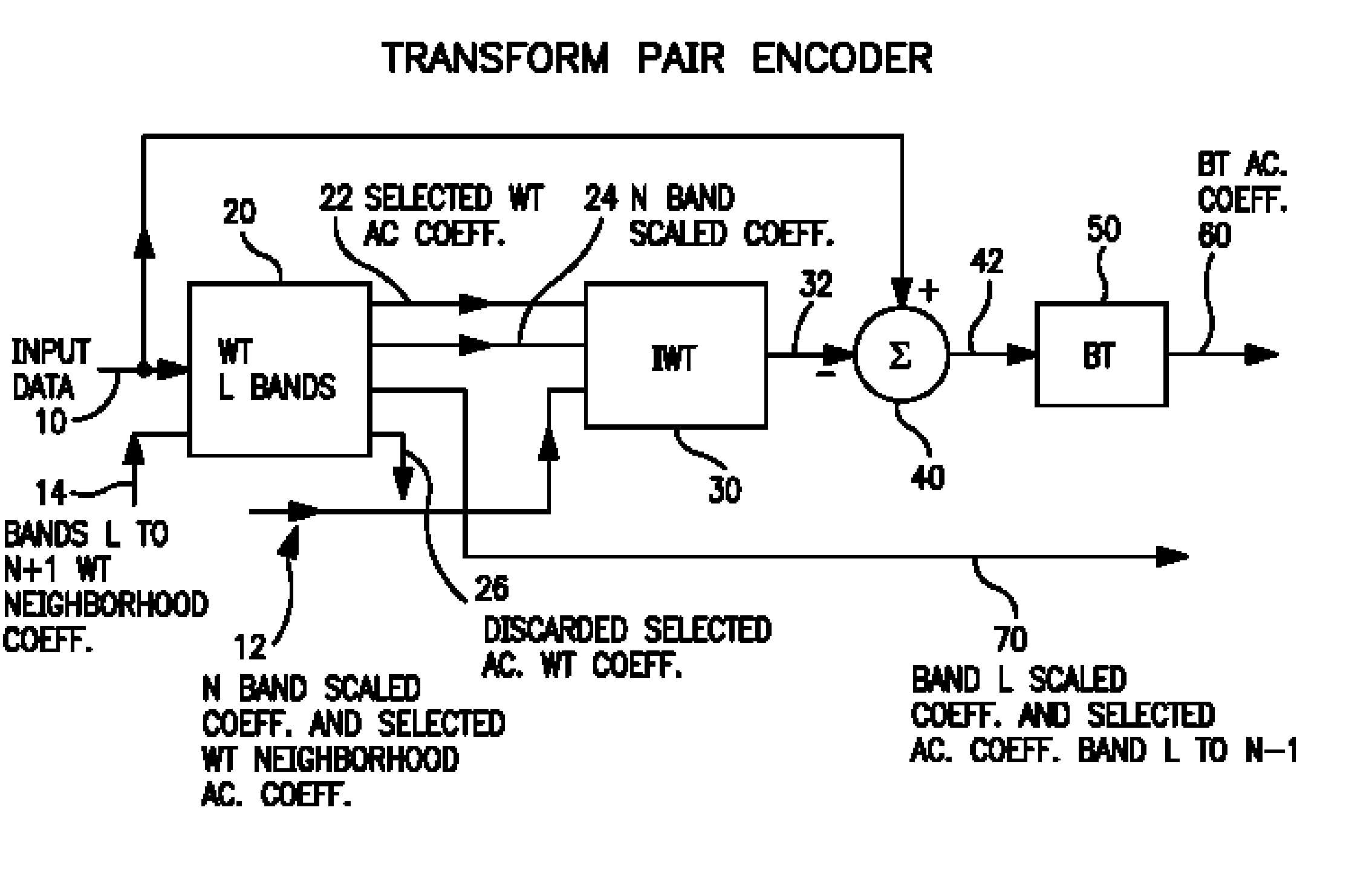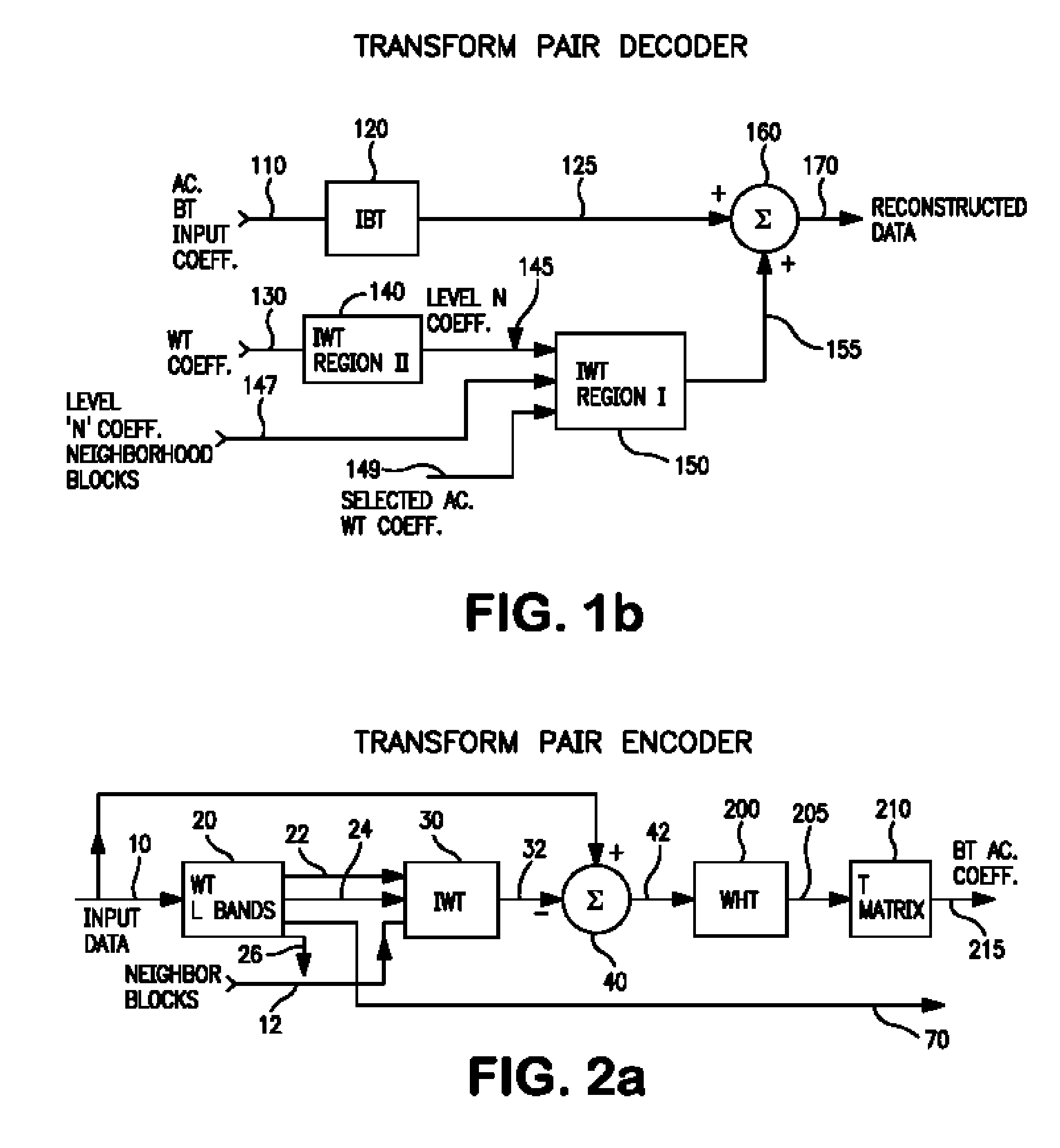Image Blocking Artifact Reduction Via Transform Pair
a transform pair and block transform technology, applied in the field of waveform coding and image processing, can solve the problems of ac. blocked transform coefficients which carry portions of low frequency energy, itself are subject to heavy quantization and hence distortion, and achieve the effect of reducing block edge artifact distortion
- Summary
- Abstract
- Description
- Claims
- Application Information
AI Technical Summary
Benefits of technology
Problems solved by technology
Method used
Image
Examples
case 1
[0059] Assume in Case 1 an image whose brightness increases linearly from the left to the right horizontal edge but does not change in the vertical direction. The brightness changes the same amount in the horizontal direction in each DCT block. It is shown later that a low-pass filter capable of capturing the zero order moment (dc value of a transform block) and the first order moment (the slope of the block) can completely capture all of this change within the span of each block and be discretely represented by a single data sample. This sample will be equal to the dc coefficient of the DCT. When the low-pass filtered image is subtracted from the Case 1 input image the resulting image has all zero-valued elements and hence all ac transform coefficients equal to zero.
[0060] Next assume instead that a blocked DCT is performed on the Case 1 input image without first using a low-pass filter and the resulting transform coefficients observed. For each block the dc term is a scaled averag...
PUM
 Login to View More
Login to View More Abstract
Description
Claims
Application Information
 Login to View More
Login to View More - R&D
- Intellectual Property
- Life Sciences
- Materials
- Tech Scout
- Unparalleled Data Quality
- Higher Quality Content
- 60% Fewer Hallucinations
Browse by: Latest US Patents, China's latest patents, Technical Efficacy Thesaurus, Application Domain, Technology Topic, Popular Technical Reports.
© 2025 PatSnap. All rights reserved.Legal|Privacy policy|Modern Slavery Act Transparency Statement|Sitemap|About US| Contact US: help@patsnap.com



